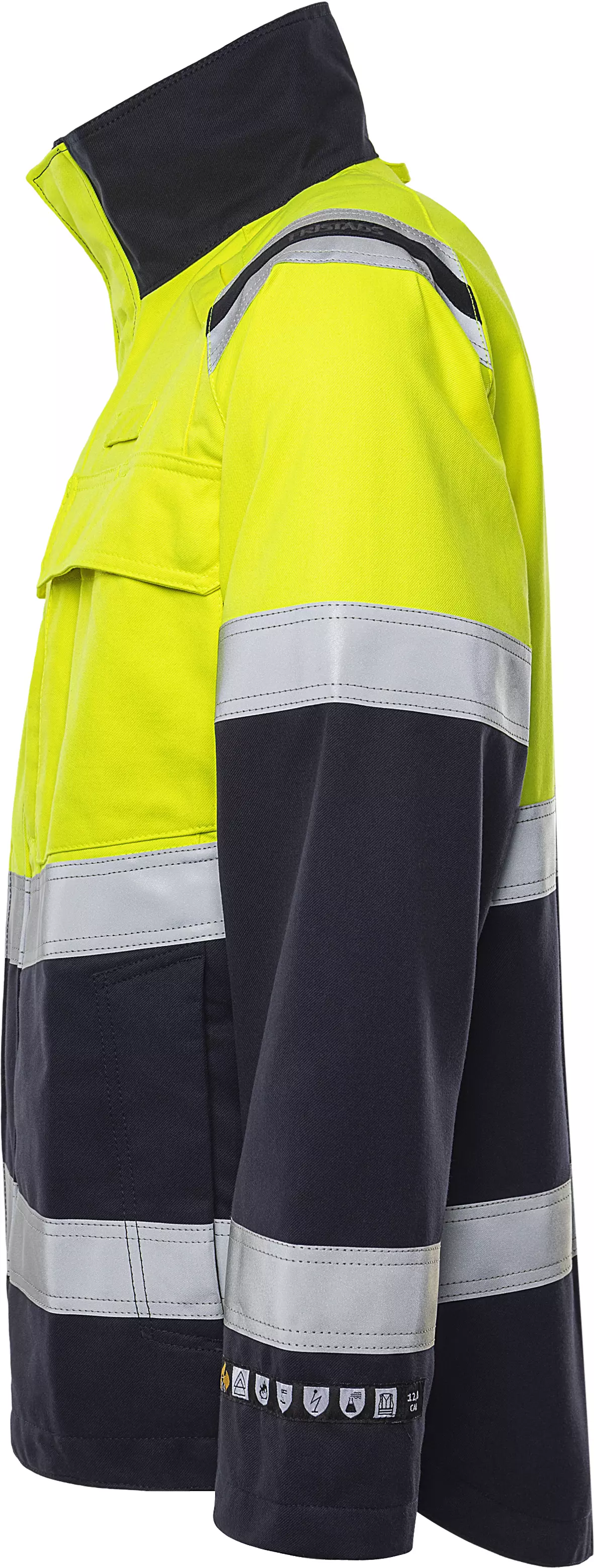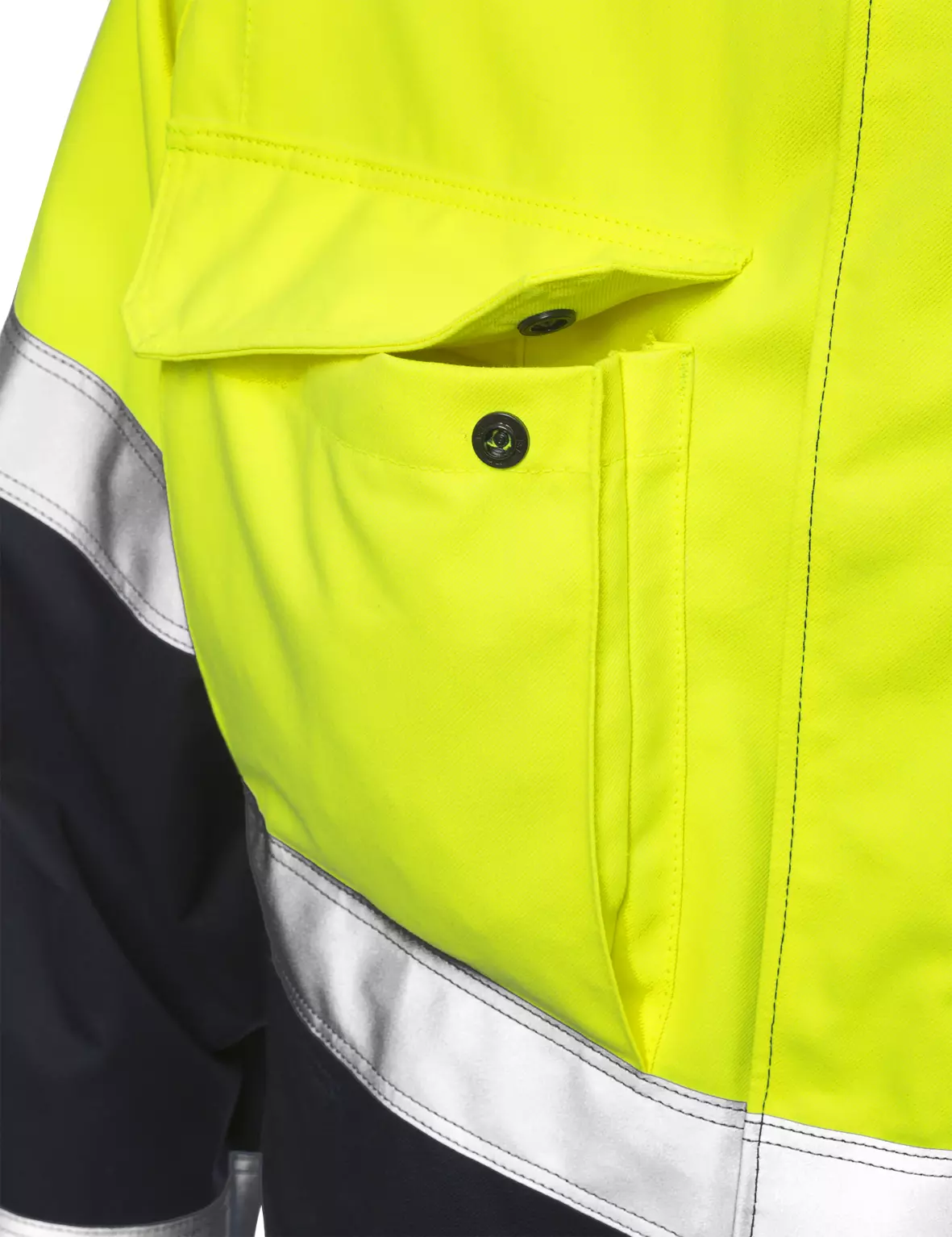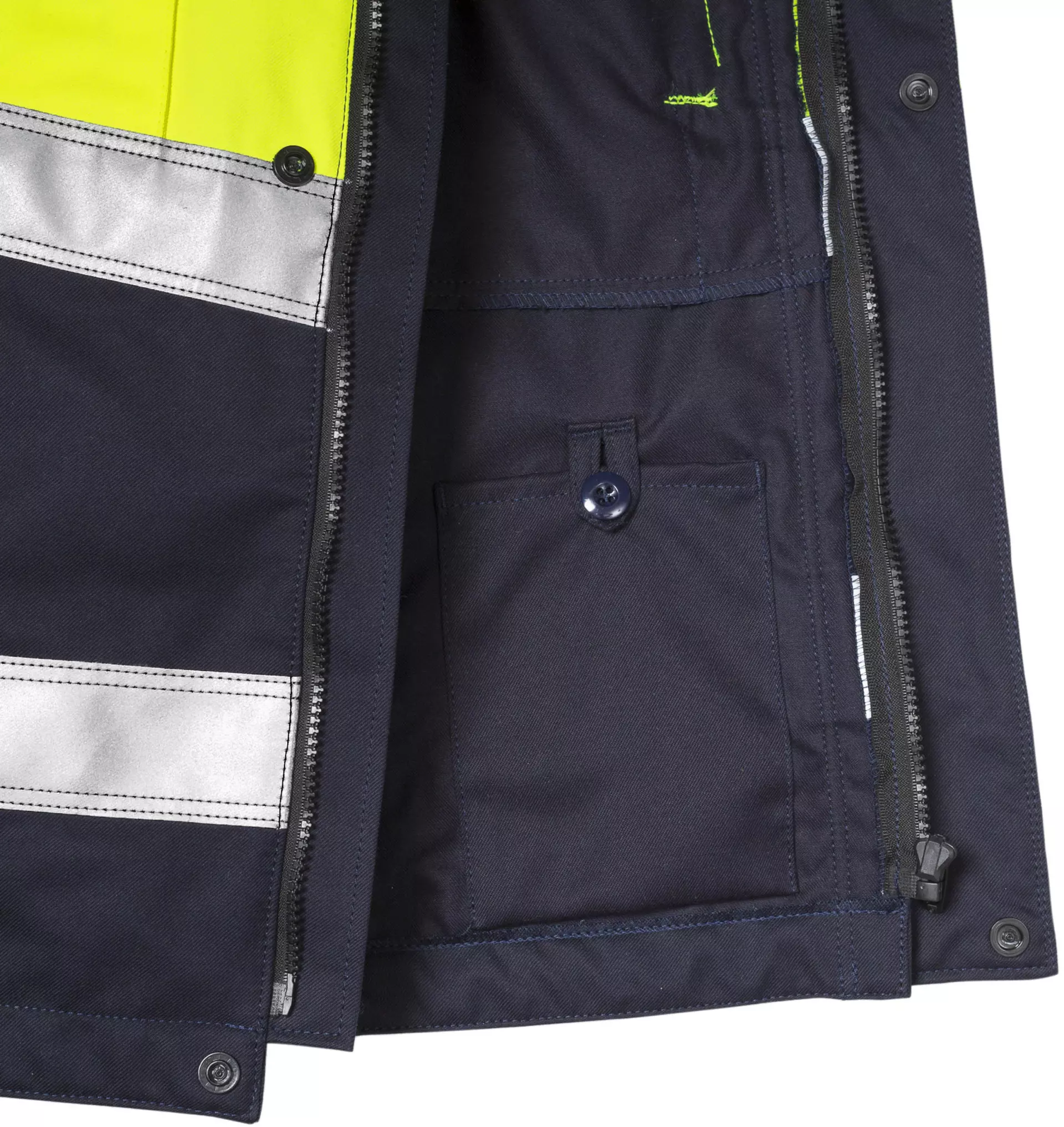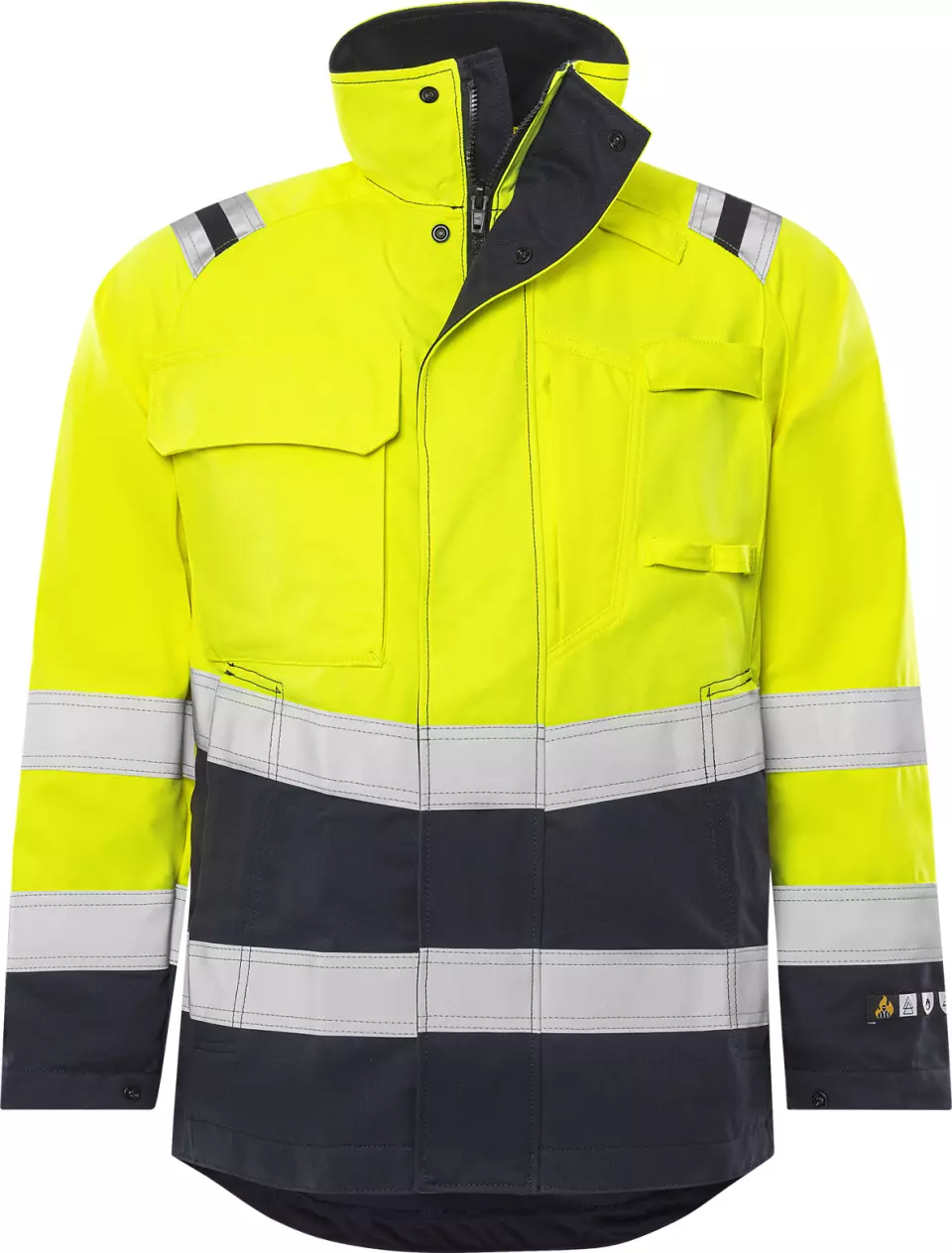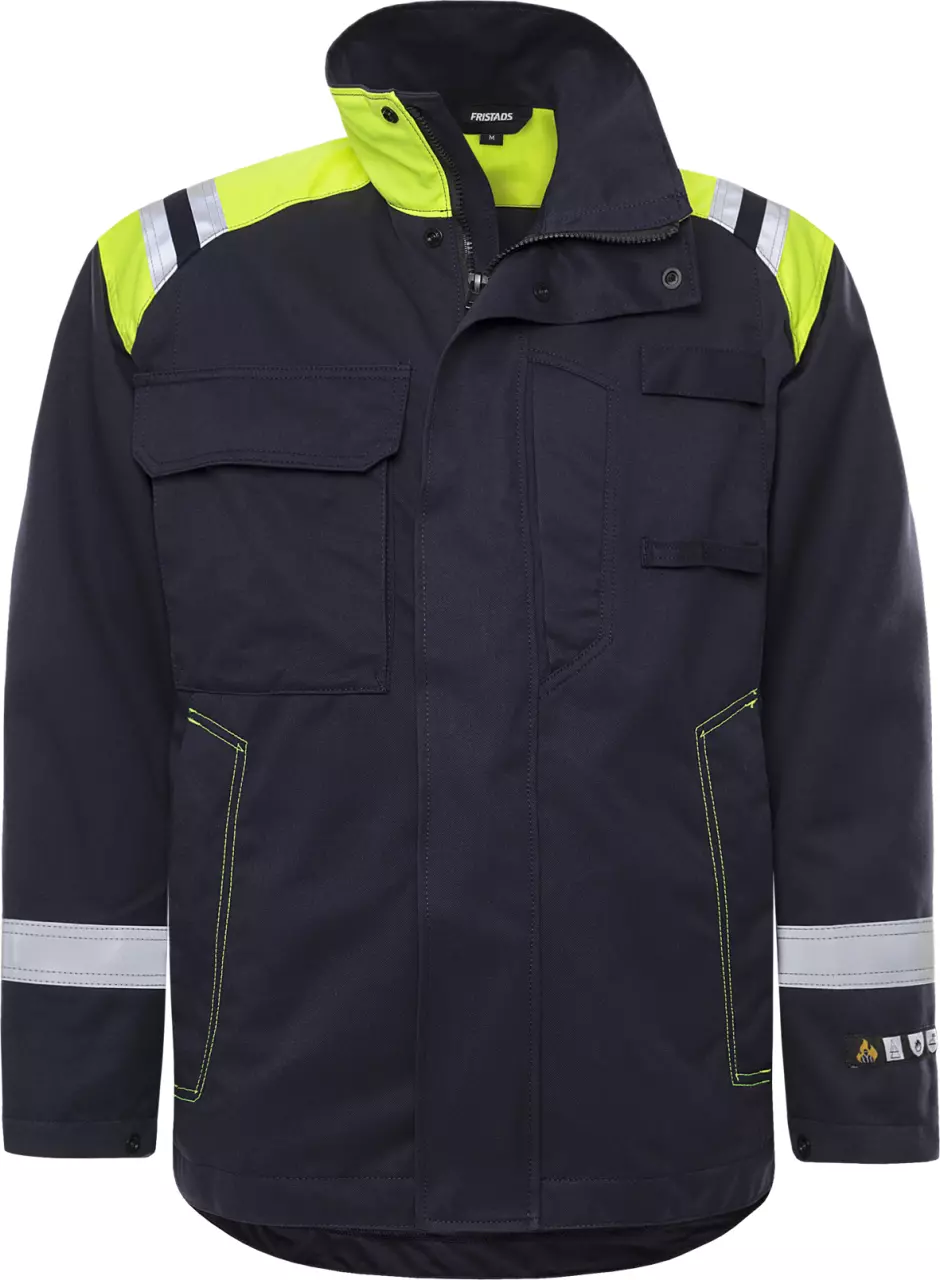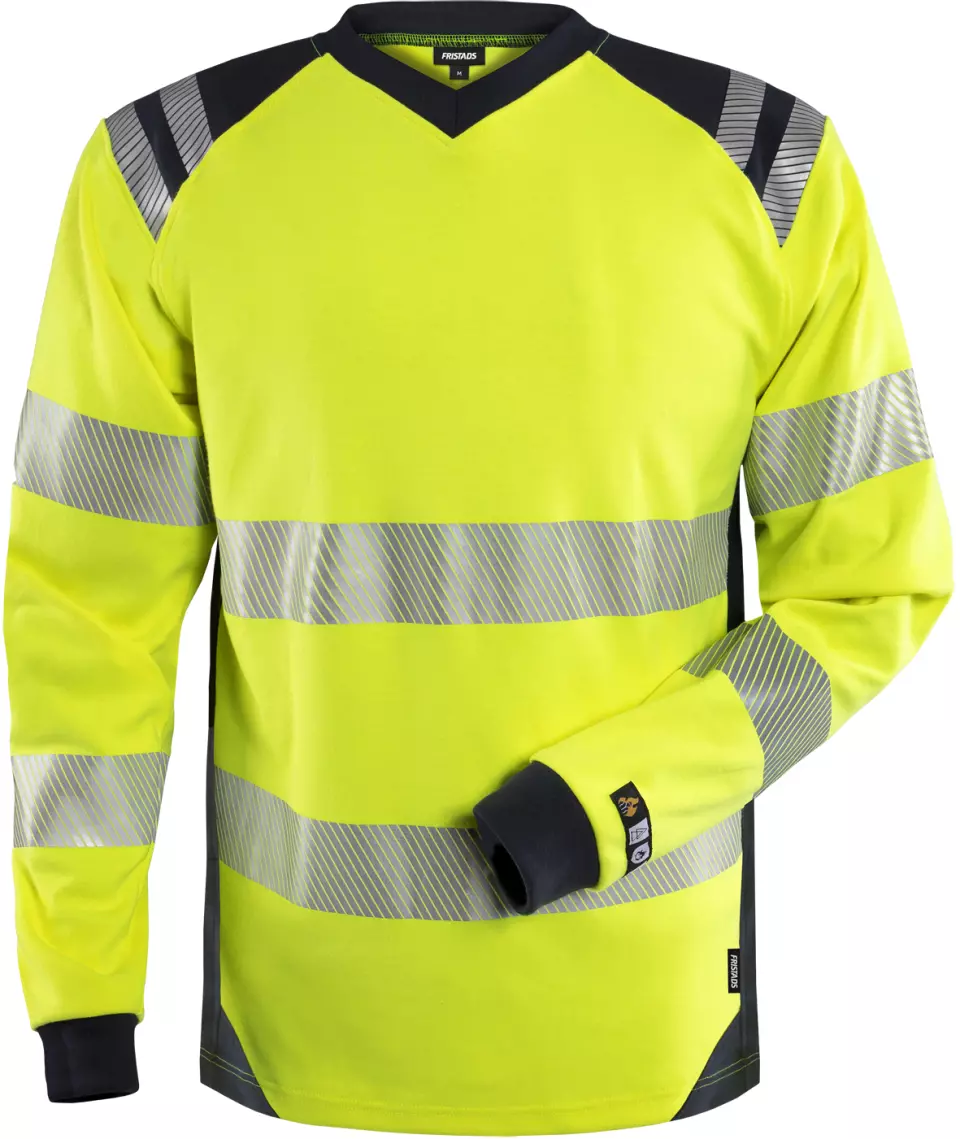
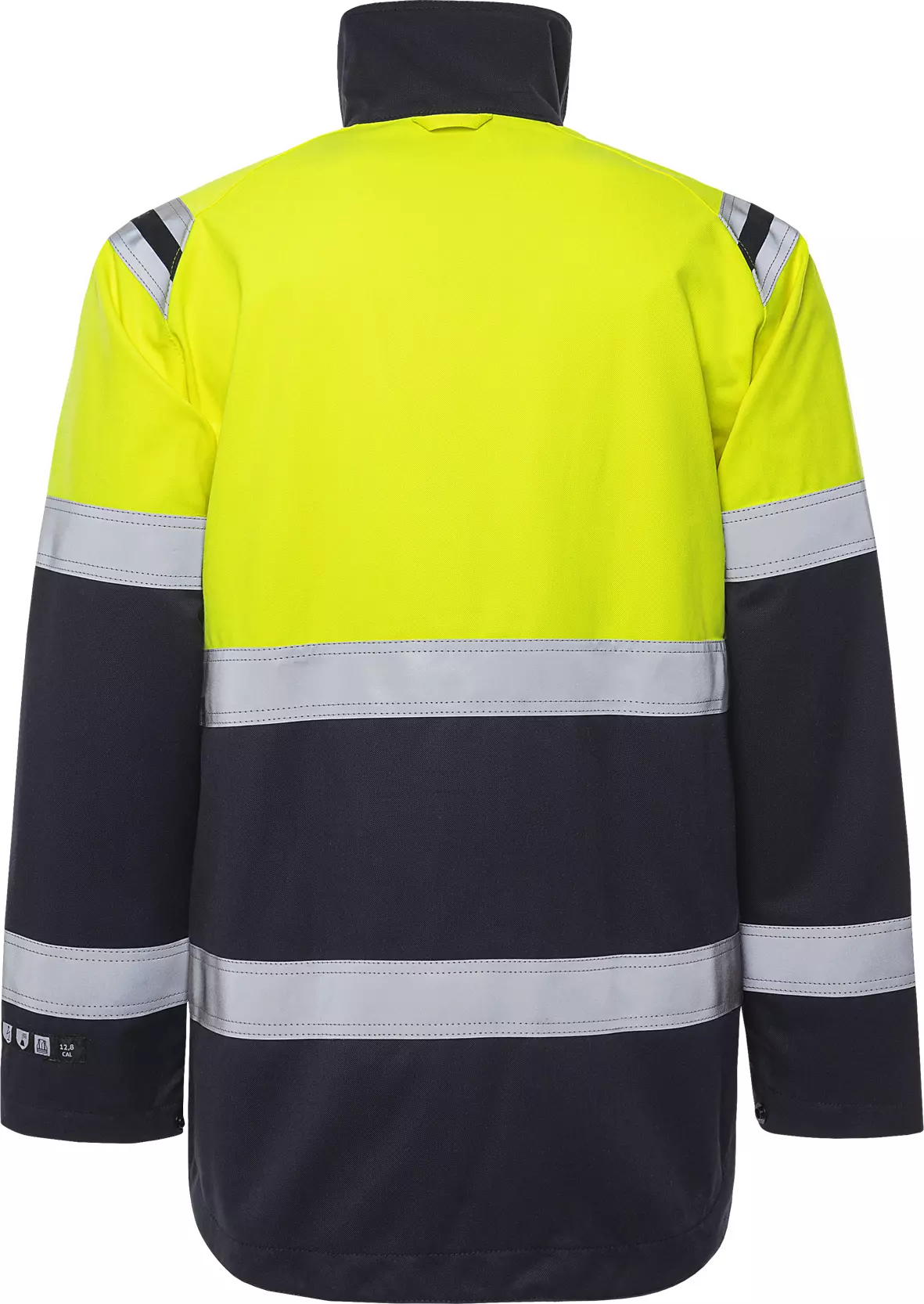

Features You'll Love

Material · Modacryl, Polyamide, Cotton

Pocket System · Inner Pocket
An inner pocket keeps your essentials secure and easily accessible.

EN 20471 · Reflective Strip Area Grade 2
This garment provides an intermediate level of visibility for use in moderate-risk environments. It is suitable for work near traffic with speeds up to 60 km/hour, featuring a specified area of fluorescent material and reflective strips.
Fristads
Flame Retardant Flamestat High Vis Jacket Class 2 4176 ATHS
Flame Retardant Flamestat High Vis Jacket Class 2 4176 ATHS
4.5 / 5
278,55 €
Choose size
Free delivery
Features You'll Love

Material · Modacryl, Polyamide, Cotton

Pocket System · Inner Pocket
An inner pocket keeps your essentials secure and easily accessible.

EN 20471 · Reflective Strip Area Grade 2
This garment provides an intermediate level of visibility for use in moderate-risk environments. It is suitable for work near traffic with speeds up to 60 km/hour, featuring a specified area of fluorescent material and reflective strips.
Product description
Flamestat high-visibility jacket that provides versatile protection for demanding work environments. Inherently flame-resistant material combines modacrylic, cotton and polyamide to ensure optimal protection and comfort. The jacket repels dirt, oil and water, and its reflective details on the shoulders improve visibility in the workplace.
Product features:
- Inherently flame-resistant material
- Dirt, oil and water repellent
- Reflective details on shoulders
- Adjustable cuffs and waist
- Extended back panel
Technical specifications:
- Material composition: 45% modacrylic, 35% cotton, 18% polyamide, 2% antistatic fiber
- Weight: 300 g/m²
- Approval after 50 wash cycles
- Tested according to industrial washing standard ISO 15797
- ÖKO-TEX® certified
Standards:
- EN 61482-1-2 APC 1, EN 61482-1-1 ELIM: 9 cal/cm²
- EN ISO 11612 A1 A2 B1 C1 E2 F1
- EN ISO 11611 A1 A2 class 1
- EN 1149-5
- EN 13034 Type PB [6]
- EN ISO 20471 class 1 sizes XS-S, class 2 sizes M-3XL
